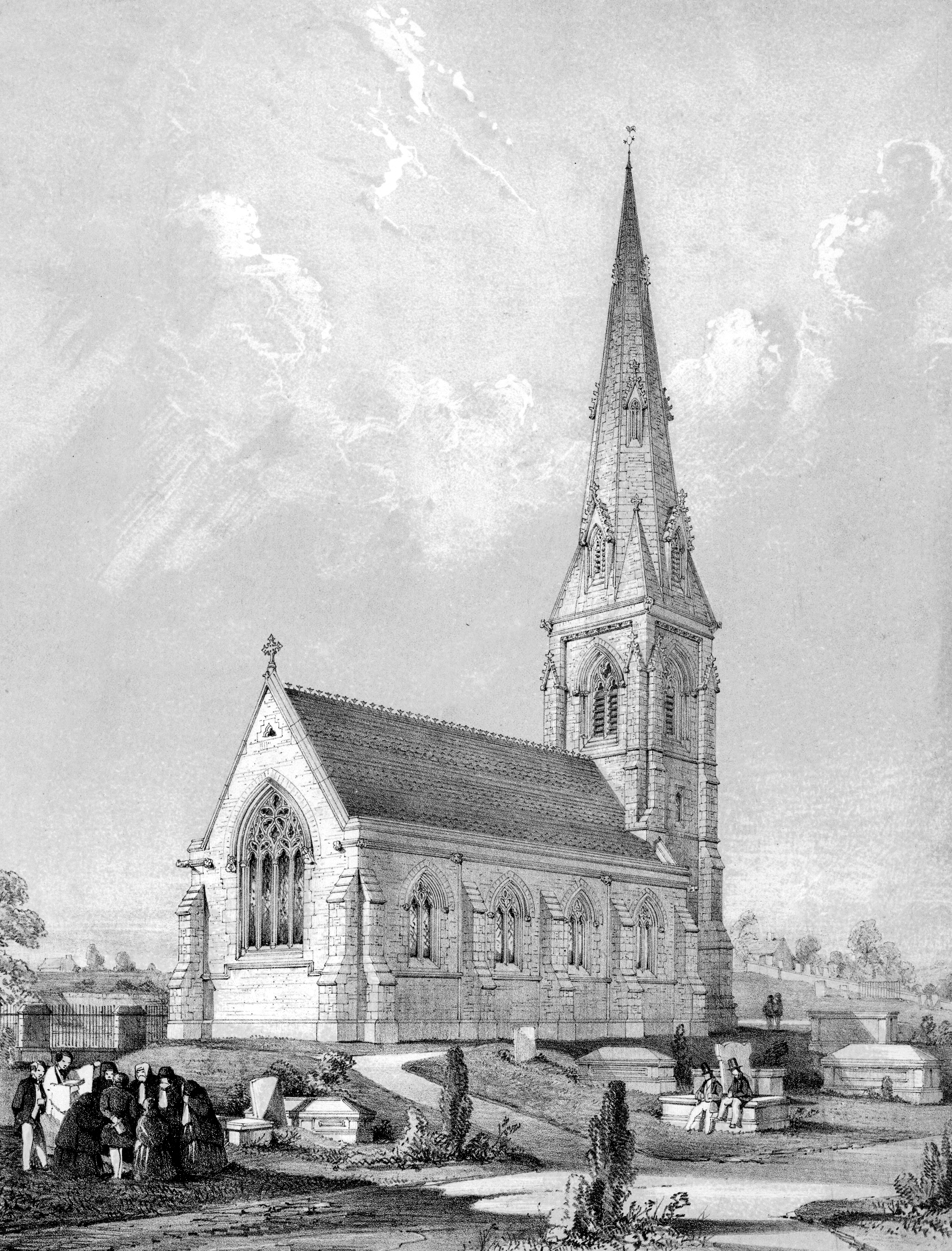
Engraving of the Anglican Chapel. Source: Picture Sheffield.
William Flockton, baptised in Sheffield in February 1804, was the son of Thomas and Charlotte Flockton, nee Ashton. Thomas Flockton was a Carpenter and Builder and William was brought up to follow his father’s trade.
In 1828 Flockton married Mary Ann Pemberton and was listed in a local trade directory in 1833 as ‘architect, joiner & builder’, with his own premises on Devonshire Street. Some of Flockton’s work can still be seen as he designed The Mount in Broomhill in the early 1830s, the Wesley College in 1838, now King Edward VII School, and the Ecclesall Bierlow Union Workhouse in 1844. His eldest son, Thomas James Flockton (1823-1899) started working with his father at the age of 12 before spending two years in London employed by Sir Gilbert Scott. He returned to Sheffield in 1845 and entered into partnership with his father and William Lee, working as Flockton, Lee & Flockton until 1849.
In 1846 William Flockton was engaged by the Sheffield General Cemetery Company to design and construct an Anglican Church on land bought to provide a consecrated area within the Cemetery. Flockton chose to design the new Anglican Church in a Gothic Revival style which created a striking contrast with the neoclassical style adopted by Samuel Worth for the Nonconformist Chapel.
Flockton & Son were responsible for several significant buildings in the Sheffield area including Tapton Hall and many churches. William Flockton and his wife had at least ten children and he continued working in partnership with his eldest son as Flockton & Son until his death on 24 September 1864.
You can read more about the history of Sheffield General Cemetery in the SGCT publications For the Living and the Dead, Sheffield General Cemetery – Then & Now, and Recollections of a Former Occupant.



